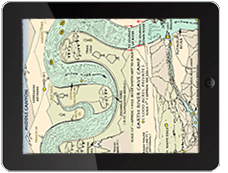American Way
Fighting the Fu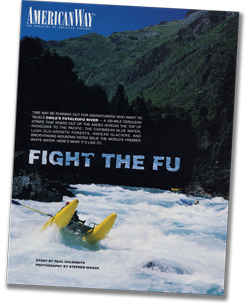
By Paul Goldsmith
American Airlines Magazine
Time may be running out for adventurers who want to tackle Chile's Futaleufu River - A 100-mile cerulean stripe that roars out of the Andes across the top of Patagonia to the Pacific. The Caribbean blue water, lush old-growth forests, Andean glaciers, and breathtaking mountain vistas belie the world's premier white water. Here's what it's like to fight the Fu.
A giant gray-green wave bears down on the boat, The bow of our 18-foot canary yellow inflatable raft dips as the wave crashes over us, and I feel the icy water run down my arms and chest inside my waterproof jacket. (I forgot to close the neck again - damn!) The water roars like a thousand TVs with the cable out. I shiver and shake my head to clear my eyes. Next to me Roger, is doing the same. Behind me in the boat I can hear John shouting encouragement to the other five people in the boat, but another wave is staring down at us. The bow dips in its now familiar pattern, and I'm already ducking my head. For seconds, I see only white froth before the boat explodes out over the wave, and then all I can see is sunlight.
Outside Magazine
"Fu Fighters"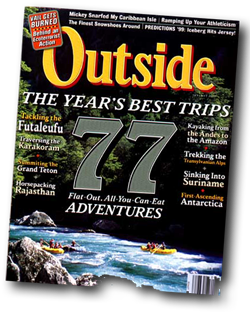
By David Rakoff
GLEN CLOSE AND I ARE HEAD OVER HEELS. Ass over teakettle we tumble from our raft into the spin cycle of the Rio Futaleufu. It is the perfect day; the sun is shining and the river is beautiful - a shimmering, effervescent foam that glits like a shower of sapphires as it closes over my head. suddenly I'm hit with a preconscious instinct, my own reverse Elephant Man moment. I am not a man, I am an animal: Follow the bubbles to the surface!
Raft the Futaleufú River
National Geographic Adventure
February 2013
No self-respecting whitewater aficionado would contest that the Futaleufú is among the greatest stretches of whitewater on the planet. For about 50 miles, this shifting thread of turquoise winds through an impossibly grand theater of scenery. Rafters take in skyscraping peaks, sheer granite cliffs, and thickets of hardwood forest as they tumble down 36 Class IV and V rapids. Despite its brawn, however, the river is gravely endangered.
A Spanish power company, Endesa, has the rights to build three dams that would destroy long-standing shepherd communities and wipe out whitewater recreation forever. Earth River Expeditions, the whitewater-rafting company that pioneered the first raft descent of the river in 1991, has and continues to put up a massive fight. They bought a large amount of land that Endesa would have to purchase in order to build the dams and fought the construction of unsustainable development. In 2012, with the profits from their raft trips, they also founded a conservation organization, the Futaleufú Riverkeeper, to work on litigation, community outreach, and other conservation efforts full time.
The first thing travelers can do to support river conservation is experience the Fu. After cruising the river each day, rafters retire to camps etched into cliffs and perched in trees. Extracurricular activities include hot-tubbing in natural springs, rock climbing, rappelling, mountain biking, and, naturally, blissing out on a private beach. All profits from the trip go toward protecting the river. Want to do more? Donate directly to the Futaleufú Riverkeeper.
The sound and the fury
NATIONAL GEOGRAPHIC ADVENTURE
Futaleuf River Rafting, Patagonia, Chile
March, 2016
By Maryellen Kennedy Duckett
Thundering out of the Andes and across Patagonia is one the world’s last great white-water wilderness rivers: Chile’s Futaleufú, or Fu. The Fu’s clear turquoise-to-teal waters rumble more than 120 miles through Chile. Each bend in the river seems to reveal a new awe-inspiring vista—steep canyon walls, giant granite boulders, Andean glaciers, snowcapped mountains, and primeval forests. The 47 rapids on the Fu range from easy Class II to extremely challenging Class V. Early spring marks the close of rafting season (December to mid-April), making now one of the last opportunities to experience the Futaleufú in 2016. “March is actually an excellent time to do the Futaleufú [pronounced Foo-tah-lay-oo-FOO], with stable weather and excellent water levels,” says Earth River Expeditions founder and owner Eric Hertz, who pioneered conservation awareness and commercial rafting trips on the river in the early 1990s. “Our most popular month is December with the holidays, but actually the weather's typically better in March than in December.”
WHERE: The Futaleufú River is located in northern Patagonia, originating in Argentina’s Amutui Quimey Lake and flowing west through Chile to the Pacific. The gateway to Futaleufú rafting is Puerto Montt, commercial and transportation hub of Chilean Patagonia. The closest international airport is in Santiago. From there, the flight takes an hour and 45 minutes to get to Puerto Montt.
HOW: Call Earth River to book a private (minimum six people, March - April) multisport river trip. Itineraries are customized to accommodate different fitness levels, rafting experience, and ages (six and older). All the rapids and activities such as mountain biking, rappelling, and horseback riding are optional. The ten-day lodge-to-lodge expedition begins in Puerto Varas (about ten miles north of Puerto Montt) and continues down the river. Day four (the first day on the water) begins with raft-safety training. Two safety catarafts (twin-hulled rafts) escort groups during all river portions of the trip.
STAY: Rates include lodging, which begins at the Hotel Cumbres Puerto Varas, where every guest room has a view of Lago Llanquihue and the snowcapped, Mount Fuji-like volcano Osorno. Remaining nights are spent at intimate wilderness properties, including the lakeshore cabins at Yelcho en la Patagonia; Tineo Patagonia ecolodge; and Uman Lodge, a remote cliff-top retreat perched 500 feet above the upper Futaleufú Valley.
EAT: Earth River expeditions include daily lunches at a local restaurant or remote picnic site, such as on the banks of a stunning waterfall swimming hole. Also included are daily chef-prepared breakfasts and dinners served at the lodges. One of the most popular dishes prepared on trips is Chilean asado, spit-barbecued lamb roasted slowly over an open fire.
FUN FACT: Near its source in Argentina, the Futaleufú River is dammed to produce hydroelectric power. Once the water clears the dam, it is free-flowing through Chile to the Pacific. To prevent similar construction and other unsustainable development on the Chilean portion of the Fu, Earth River Expeditions created a trust to purchase large chunks of land along the river.
The Robb Report Collection
June 2013
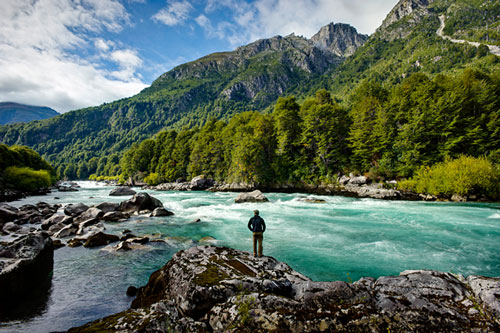
Patagonia's greatest whitewater adventure
By Shaun Tolson
The Futaleufu River’s Terminador Rapid can be heard surging from a quarter of a mile away. The class 5 stretch of whitewater cascades over and around imposing granite boulders for eight-tenths of a mile, and it lives up to its name. The river which runs more than 120 miles through Chile, drops 3,000 feet from beginning to end, and through its most challenging section of rapids the Futaleufu drops 45 feet per mile --33 feet more per mile than the Colorado River when it passes through the Grand Canyon. In Patagonia, which emerged as a world-class whitewater destination a little less than three decades ago, the Futaleufu is the crown Jewel.
A group of kayakers first negotiated the Futaleufu’s rapids in 1986, and the following year a commercial rafting company from the United States attempted to duplicate the effort. Prior to that attempt, The Terminador and other rapids along the river were unnamed, but that was about to change. Outfitted with large, traditional heavy rafts full of gear and rafters without paddles, the American company successfully traversed a handful of class 5 rapids before reaching the stretch of whitewater that--based on the impending result-- would come to be named Terminador. The rapid offers no margin of error, and the raft, weighed down by gear and without the help of passenger's paddling, drifted from the necessary line down the left side of the river. Instead, it was pulled down the center of the rapid, where it was trapped (and subsequently destroyed) in a large, violent hole--the section of a rapid below a submerged boulder where the resulting waterfall creates a backward--falling wave of equal strength. All of the rafters survived, but news of the event quickly circulated throughout the international rafting community and for years the Futaleufu was deemed unraftable. It wasn’t until 1991 that Eric Hertz and his company, Earth River Expeditions, decided to explore the possibilities.
Cade Hertz, Personal Reflections
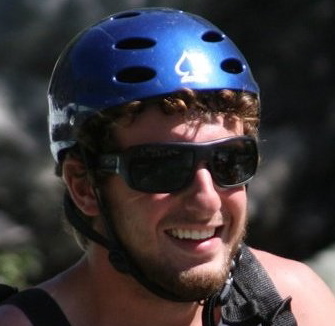
After my mom agreed to let me go, I was on my way to my first multi-day rafting trip at six on the Salmon River in Idaho. For the next few years my dad took me on a number of different rivers but my favorite was the Magpie in Quebec. At 9 I began paddling the Magpie in an inflatable kayak and shot videos to sell to the guests. My favorite part of the trip was starting the fires, my least favorite, editing.
Growing up I knew my dad had been involved in fighting dams in Quebec and Chile but was really too young to understand what was at stake. That perception changed in 2003 when I was eleven and my day told me that a private company, Hydro-Mega, proposed a series of dams on the Magpie which would flood the spectacular lower part of the river, destroying the most beautiful camps and best rapid. I remember when he told me I didn't have much of a reaction. He said, "Cade don't you care?". I mean what could I do? As a kid you feel helpless. My dad told me I could write a letter to the government commission studying the dam's feasibility and testify against the dams at a government hearing being held in a tiny town up near the river.
After traveling for a whole day we arrived at a packed town hall where the hearings were taking place. I remember thinking how strange it was being up there in this tiny village on the St. Lawrence River instead of being in middle school. The power company's engineers testified that the first dam would only be 35 feet high, impacting only a small fraction of the river. They showed slides on a giant screen of the rapid and falls to be flooded and claimed the rapid had never been rafted and never would be because it was too dangerous. After they were done, it was my time to speak. I read my statement which mentioned that I had been running the river since I was 8. That it was my favorite river and that the best rapid was the one they were planning to destroy. I went on to say that my dad would not let me run the rapid until I was 13 and that if they built the dam I would never get to run it. They had set up my video camera to play on the big screen. For the next five minutes I showed raft after raft successfully running the supposedly unrunnable rapid. The video concluded with an interview with some of the guests at the bottom of the rapid saying it was the highlight of their trip. The power company engineers looked pretty embarrassed and the judge running the hearings said "Thank you, Mr. Hertz, for such an informative testimonial."
That next summer Earth River ran a conservation trip on the Magpie to raise awareness to the threats from the dams and I shot video of the trip. Bobby Kennedy along with representatives from environmental groups such as the Canadian Sierra Club and Green Peace came to see and then fight for the protection of the River. After the trip there was a press conference in Montreal. There was a long line of television news cameras set up in the back of a packed room so I set my handheld camcorder next to theirs on the top of a giant tri-pod I had borrowed from my dad's friend Steve Mahan. I climbed up on a chair in order to reach the camera and get a clear view of Mr. Kennedy, my father and the members of the environmental groups sitting at a table in the front. I remember my dad saying that the Magpie was the best multi-day whitewater rafting river east of the Mississippi and that it was one of the top three or four multi-day whitewater rivers in North America. Mr. Kennedy said that, he had rafted all over the globe and between the scenery, rapids and fishing he considered the Magpie to be among the best. He said "damming the Magpie was like finding the Mona Lisa in your attic and selling it at a garage sale." When they were finished speaking the camera guy to my left asked if by chance I had any footage of the actual trip? I said yes and suddenly I was swarmed by news people asking to borrow the footage. They got together and agreed to take me and my footage back to the CBC (Canadian Broadcasting Corporation) studio to interview me and make copies for the other stations for the evening news. That night the interview and the trip footage was aired across Canada on all the major stations.
Driving back toward the border the next day we stopped for ice cream and gas near the New York border and someone came up to the Earth River truck and asked my dad if we were the ones they had seen running the Magpie River on television last night.
In the end, they built the first dam and I never did get to run that final rapid but the other two dams were stopped and although it's hard to float over the buried falls and rapid now, I learned everyone has a voice, if you use it.
Ty-Smith, Personal Reflections
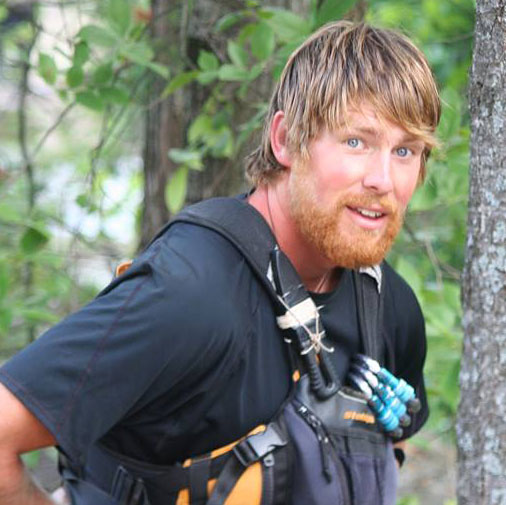
I grew-up in the lakeside village of Shanty Bay, Ontario. At that time it was one of the fastest growing areas in North America. Box stores seemed to be growing out of the ground and with them, a greater detachment from the area's rural roots. One day, while leaving one of the malls, I witnessed my mom's reaction to something that I have never forgotten.
My younger brother and I were in bolster seats in the back of our family minivan. We were stopped at a red light when the driver of the car ahead of us, nonchalantly dropped a chocolate bar wrapper out the window. Without hesitation, my Mom got out of the van and strode up to the culprit's car. She bent over, picked up the wrapper, leaned in toward the driver and said, in a tone that was reserved for serious indiscretions: "I have two young boys in my car that would be happy to pick this up, and you're setting a terrible example for them." At that, she turned on her heels and returned to our car, leaving the driver speechless. At the next light, we ended up beside the car and driver flipped my mom "the bird". I imagine it was his way trying to save face in front of his girlfriend.
Although the littering act was small and regardless of whether my brother or I would have pick up the wrapper, her controlled conviction always stood out in my mind as representative of the clash between environmental indifference and advocacy.
After years of environmental education, I now have the necessary knowledge to stand up against a mining development in a river basin's headwaters or new dam proposal and even to perhaps suggest some viable alternatives. My current goal is to find a career path that balances and merges, my guiding and academic interests. It is a privilege to be a part of Earth River. Their combination of advocacy and ambitious expeditions is a path worth following.
Danny Amos, Reflections Personal
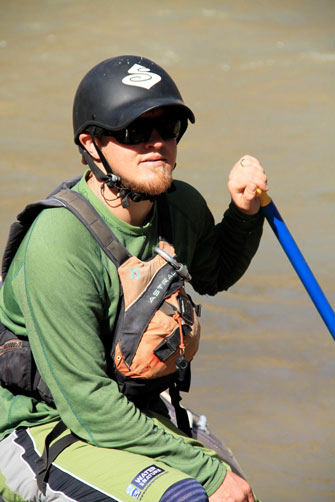
My childhood was as normal as any other middle class American kid. What I didn't realize as a child was how hard my parents secretly worked. They both had entry level blue collar jobs, putting in well over forty hours a week just to keep food on the table and gas in the cars. Don't get me wrong there was always food on the table and mom always had my two brothers and I to hockey or soccer practice on time. As a kid my biggest worry was finishing my homework as quickly as possible so I could ride my bike or build a fort. Life was easy for me, and the sacrifices my parent made to provide that were amazing. It wasn't until I was fourteen when life hit me like a grand piano. It was Valentines Day when I learned to live life to the fullest and to never take it for granted. I watched my dad give my mom a Valentine and a kiss, before we rushed out the door, so dad could get us to school on time. "Bye dad!" I said as I turned my back and walked to class. That was the last time I would say that. My Dad spent his whole life working as hard as he could to provide the best life a kid could ask for and he did a good job at it too.
After my dad was killed in a car accident, I knew I had to live every day as my last. Living life to the fullest was and is my focus ever since that day. In a way I believe that my life has become even better since then, with the realization that life could end as soon as tomorrow.
Every day I wake up excited to live, excited to play and excited to share this beautiful world with others. It didn't take much searching for me to find a way to fulfill my need to live life to the fullest. The hard work and big fun of rafting has made it simple to share my passion for life with others while having as much fun as possible everyday. The river has filled that important void and it is for that reason, my love for life and the river continue to grow. The tragedy of my dads passing has forever shaped my life and my attitude. I will continue to live with a exquisite work ethic but will always play first. Every day is a gift, get up early and stay up late. Thanks dad!
Jiyue Zhang, Personal Reflections
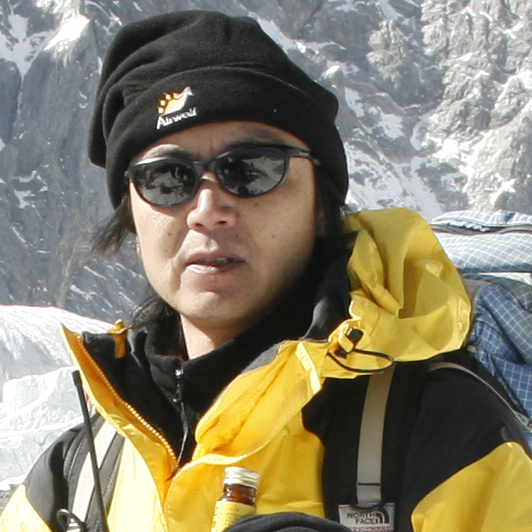
My discovery of rafting was both good fortune and luck. In 1985 China experienced reform and opened the My discovery of rafting was both good fortune and luck. In 1985 China experienced reform and opened the doors to foreign expeditions. A group of Americans wanted to raft the Yangtze River. After three years of negotiations, the team finally received government permission under the condition that it had to be a joint SINO-USA expedition. This was China's most famous river and the government felt the country must be represented.
River rafting was absolutely new to China, so the contract specified that the Americans would train the Chinese team members. By luck I had the privilege of being selected and in 1985 completed an intensive three month raft training program, on 8 rivers in the US. I had found my passion.
1986 was a Chinese rafting "New Year". Besides our SINO-USA Expedition, a number of Chinese teams attempted the river. The race to be first down China's most famous river was a major media event. Regardless of the dangerous rapids and their lack of experience, no one retreated and in the summer of 1986, China's first rafting year, 10 people lost their lives on the Upper Yangtze. I personally had a close call on the final class 6 rapid that ended our expedition, as I was nearly being crushed between a heavy overturned raft and a wall.
Being selected to represent my country on the first rafting trip was luck and surviving that final rapid was luck but the terrifying memory of that final rapid has since been buried beneath the beautiful plateau landscape and the lovely Tibetan people I met. Luck can open your eyes or it can close them, but either way, it changes the way you see the world.
Cade Hertz

Guide/Trip Leader
Guide
Videographer
Cade has been guiding for 18 years (ten on the Futalkeufu) and running expeditions since he was 6. He has worked as a guide on the Middle Fork of the Salmon, Tuolumne, Alsek and Rogue. Internationally he has done expeditions in Patagonia, Peru, Tibet and Quebec. At 9 he began paddling an inflatable kayak down the class 4 Magpie River in Quebec and shot video to sell to the guests. The following year he was on the first exploration of the Lakes of Patagonia in Chile, featured in National Geographic Adventure Magazine. In 2003 he became active in the fight to stop multiple dams slated for the lower Magpie River in Quebec, testifying at government hearings and showing a video he shot that contradicted the developers claims that the River’s most impressive and soon to be flooded rapid was not runnable. His Magpie footage of a conservation expediton with Robert Kennedy Jr. was shown across Canada on CBC Television. In 2010 he shot video on the first raft and commercial descent of Peru’s Yavero River. In 2014, he coordinated the safety for a first descent on the Rio Ventana. His video work can be seen on the Earth River site. Cade is an avid kayaker and has run multiple rivers throughout the U.S. and Chile.
Ty-Smith
 Guide/Trip leader
Guide/Trip leader
Ty is from Ontario, Canada and has been guiding for 14 years. He has managed a large rafting company on the Ottawa River and is been a guide instructor on the W.I.L.D guide school; where participants run rivers from Canada to Costa Rica over a three month period. For four years Ty has guided for Earth River on the Magpie and for three on the Futaleufu. Ty has a masters degree in Environmental Science and did his thesis on the disastrous impact a breach in a British Columbia mine's tailing pond would have on the down stream watershed. Ironically, the following year, in Canada's worst environmental mining disaster, that very same British Columbian mine had a dam failure sending millions of metric tons of poisonous waste water into the downstream waterway. Ty has led a number of Inui First Nation trips down the Magpie River in Quebec, in order to build an awareness within the native community to what is at stake with the proposed dams. This awareness within the native community is paramount if the river is to be protected. Ty plays the mandolin and guitar and often sings around the campfire.
More...
Shaohong
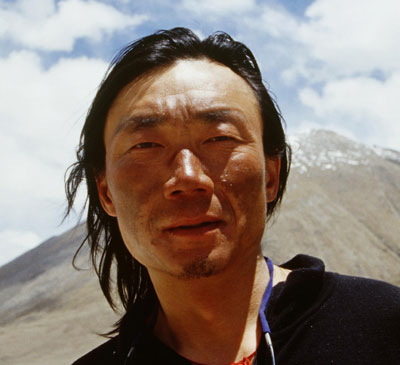 Expedition leader
Expedition leader
River & Mountain Guide
In his twenties Shaohong was China's premier decathlete and honored with the prestigious "Chinese National Sportsman Award". When he retired from track, he forged a new career in adventure travel becoming an expert mountaineering, trekking and river guide.
Shaohong has taken part in numerous mountaineering first ascents in eastern Tibet. He participated in the 2002 joint China-Japan expedition that reached the summit of ChoOyu, the world's fifth highest mountain. In 2005 he summited Everest as part of a Chinese team organized to formally measure the height of the mountain. He was awarded China's highest sporting honour, the Sport's Medal of Honour, for his contribution to the expedition's success.
Shaohong has participated in many Earth River rafting tours on the Great Bend of the Yangtze in Yunnan and the Upper Yangtze river in Qinghai provinces. He has gained a great reputation for his Chinese cooking on the rafting expeditions.
Shaohong is also a professional photographer, and photographs have been published in China National Geographic and Japanese and Hong Kong outdoor adventure and travel magazines. In 2008 he was the official photographer for the Chinese Mountaineering Team's ascent of Mount Everest with the Olympic Torch. His photographs were used in the official commemorative album, "Olympic Shining Flame on Mount Everest."
Jiyue Zhang
 Chinese Partner/Guide
Chinese Partner/Guide
Jiyue is one of the grandfathers of adventure travel in China. Upon graduation from Sichuan Sports Institute in 1982, where he was a highly ranked 400 meter runner, Jiyue began working for China Mountaineering Association as a climbing guide and liaison working with international climbers. In 1985 the Chinese government sent him to the U.S. for whitewater training where he ran eight different rivers. The following year, he participated in the joint Sino-USA, first descent of the Yangtze River which completed 2000 kilometers of the previously unrun river. ABC's American Sportsman,featured the expedition in a two-part, 90-minute special titled, "Challenging China's Yangtze".
In 1993, under China's Open Door policy, Jiyue founded, Sichuan Earth Expeditions, one of the first private adventure companies in China. The company organized and led numerous first ascents throughout China and Tibet including the North Face of Gonga Mountain with one America's of America's most distinguished mountain climbers, Fred Becky. Sichuan Earth Expeditions also participated in the 2005 Chinese climb of the Mt. Everest and the 2008 World Olympic torch relay to the top of Everest.
As Earth River's China partner, Jiyue helped organize and run the first descent of the Shangri-la's Shuilo and Po Tsangpo Rivers in Tibet, as well as early commercial descents trips down the Great Bend and Upper Yangtze, He has been featured in Outside, National Geographic (yellow), National Geographic Adventure, Men's Journal and on National Geographic Television, China's Outdoor Exploration and Japanese Outdoor Magazine.
Eric Hertz
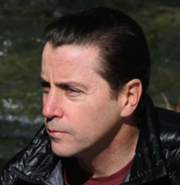
"Eric is one of the best in the business - Obsessed with safety."
National Geographic (yellow) Magazine
I met Eric in 1980, when he almost single-handedly stopped the James Bay II Hydro-electric Project, which would have destroyed eleven major rivers in northern Quebec. I worked with him to save Headwall Canyon in British Columbia and Quebec's Magpie.
Robert Kennedy Jr.
Eric’s guiding began at 16 on a cross country bicycle trip where he met a guide who invited him to row a baggage boat on Oregon's Rogue River. Throughout his high school and college summers he guided on the Tuolumne River in California where he was one of the first to run a commercial paddle boat. After college, he spent his summers guiding on the Colorado River in the Grand Canyon and was a playwright the rest of the year. His plays won a number of awards including a National Endowment for the Arts fellowship. His play “Between Rails” was produced off-broadway. (New York Times review). During this time he also co-founded the Rondout-Esopus Land Conservancy in the Catskill and Sharwangunk ("gunks") Mountains of the Hudson Valley in New York which has protected over 3,500 acres.
In the late nineteen eighties, Eric gave up playwriting to start Earth River. The company was founded on a number of core principles; exploring and finding the most amazing trips, running the finest, safest trips possible and fighting to preserve important river resources. Over the past 23 years, Eric has organized and led dozens of conservation awareness trips taking policy makers and media down threatened rivers. His efforts focussed on stopping the James Bay Hydro-electric Project in Quebec and dams on Chile’s Bio Bio and Futaleufu rivers and Quebec’s Magpie. Eric's other conservation efforts helped bring awareness to the preservation of watersheds like British Columbia’s, Yosemite like, Headwall Canyon and New Foundland’s Main River, which were both threatened by clear cut logging. Using his land trust experience, he co-founded the Earth River Land Trust on the Futaleufu which to date has protected many kilometers of the river’s most dramatic shoreline.
Eric has been a pioneer in river rafting safety. He introduced the industry to foot cups to keep paddlers in the rafts and was among the first to teach clients active "self rescue" swimming techniques rather than passively floating on their backs. He was the first outfitter to offer a raft training day before running class 5 and introduced the industry to the use of caterafts "safety cats" as a rescue craft on large volume rivers like the futaleufu. He was the among the first to introduce oar-paddle hybrid rafts and double guided boats on challenging rivers.
Eric has organized and led first descents around the world and has been featured in American Airlines Magazine, Outside, National Geographic (yellow), National Geographic Adventure, The New York Times, Conde Naste Traveler and Men's Journal and on National Geographic Television, P.B.S., ESPN, TBS and Nicolodian. He pioneered and opened commercial rafting and multi-sport trips on a number of spectacular destinations including; Patagonia Chile's Futaleufu, China's Great Bend of the Yangtze, Quebec's Magpie, Peru's Colca Canyon, Tibet's Upper Yangtze, British Columbia's Headwall Canyon and the Yukon Territory's Primrose. Eric was the trip leader and captained the lead boat on a number of notable first raft descents including; the Futaleufu, Magpie, Headwall Canyon and Tibet's Schulo Ho which was featured in National Geograpic (yellow) Magazine. He was inducted into the New York Explorers Club in 2015. His two sons, Cade and Teal, guide for Earth River.
Trip Dates and Prices
Copyright © 2020 Earth River Expeditions


